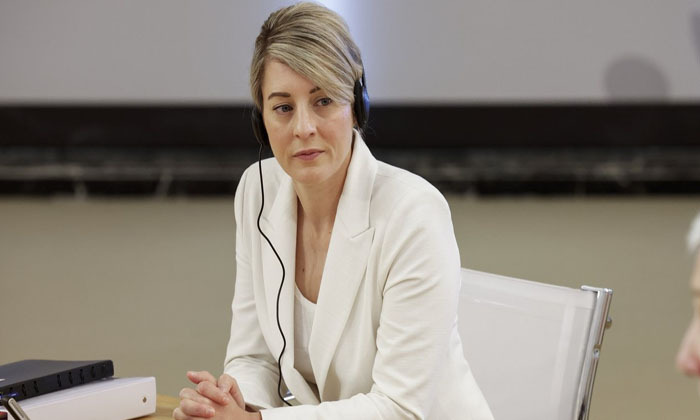 -4.56 c
-4.56 c101.7 FM
88.1HD2
 8.85 c
8.85 c101.7 FM
88.1HD2
Projections show between 3,000 and 15,000 could die from COVID-19 in Ontario
BY , Apr 3, 2020 5:44 PM - REPORT AN ERRORLAST UPDATED ON Apr 24, 2020 3:33 PM
Dr. Peter Donnelly, President and CEO of Public Health Ontario, addresses a media briefing on COVID-19 provincial modelling in Toronto, Friday, April 3, 2020. THE CANADIAN PRESS/Frank Gunn
The steps the Ontario government has taken so far to limit the spread of COVID-19 have likely saved tens of thousands of lives, public health officials said Friday, but even with further action the death toll could reach as high as 15,000.
Projections released by the province showed 100,000 Ontario residents could likely have died over the full course of the pandemic if the province hadn't implemented measures such as widespread closures of businesses and schools in order to promote physical distancing.
As it is, the figures estimate thousands of people could still die without more aggressive measures in place.
Dr. Peter Donnelly, president of Public Health Ontario, said the data paint a stark picture of the gravity of the situation facing the province — and the need for ongoing action.
"If we do everything that we can think of — everything that already has been done stays in place, all of the other measures that are being considered put in place — then I think we could reduce the death toll in Ontario to somewhere between 3,000 and 15,000," he said. "Where we end up depends on all of us."
According to the projections, Ontario would have seen 300,000 cases of COVID-19 by the end of April had nothing been done. Current measures in place will likely bring that number down to 80,000, while further measures could lower it to 12,500.
Similarly, the number of deaths would have hit 6,000 by month's end with no measures, Donnelly said. Staying the course is projected to reduce the death toll by April 30 to 1,600, and keep it as low as 200 with even tighter restrictions than are now in place.
Donnelly and other officials offered suggestions for such measures. Those included reducing the list of essential businesses that are currently allowed to operate, imposing entry restrictions on some communities including First Nations, providing more protection for seniors and tightening guidance on physical distancing.
Donnelly said the projections, which are far from set in stone, span the full course of the outbreak. He said that could last as long as 18 months to two years if second and third waves of the virus are considered.
The number of COVID-19 cases and fatalities in Ontario continued their upward trajectory on Friday, though those figures were eclipsed by the surge in cases that are now considered resolved.
The province reported 462 new cases, bringing the total number of infections to 3,255. Deaths climbed by 14 for a total of 67 provincewide.
Those figures did not include four new deaths at a central Ontario nursing home, the scene of one of the largest outbreaks in the country.
Twenty of the roughly 65 residents of Pinecrest Nursing Home in Bobcaygeon, Ont., have died in recent weeks. At least 24 staff members at the facility have also tested positive for COVID-19.
The province has reported numerous outbreaks at long-term care facilities across Ontario.
But the number of resolved cases also surged significantly, climbing more than 30 per cent to 1,023 from 831 on Thursday.
Share on
Related News
Sign up for the newsletter
We'll deliver best of entertainment right into your inboxWe love to hear from our listeners, so feel free to send us message















